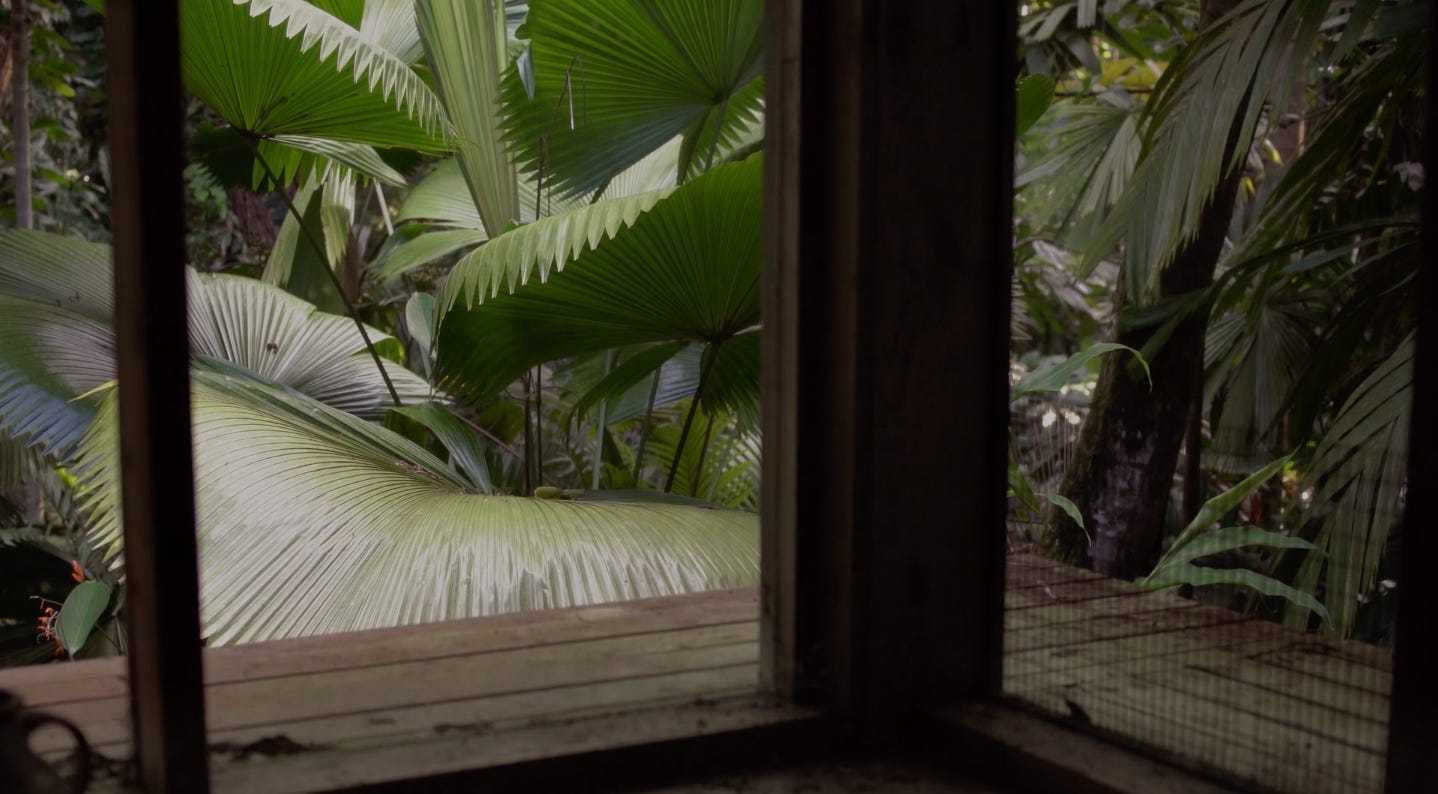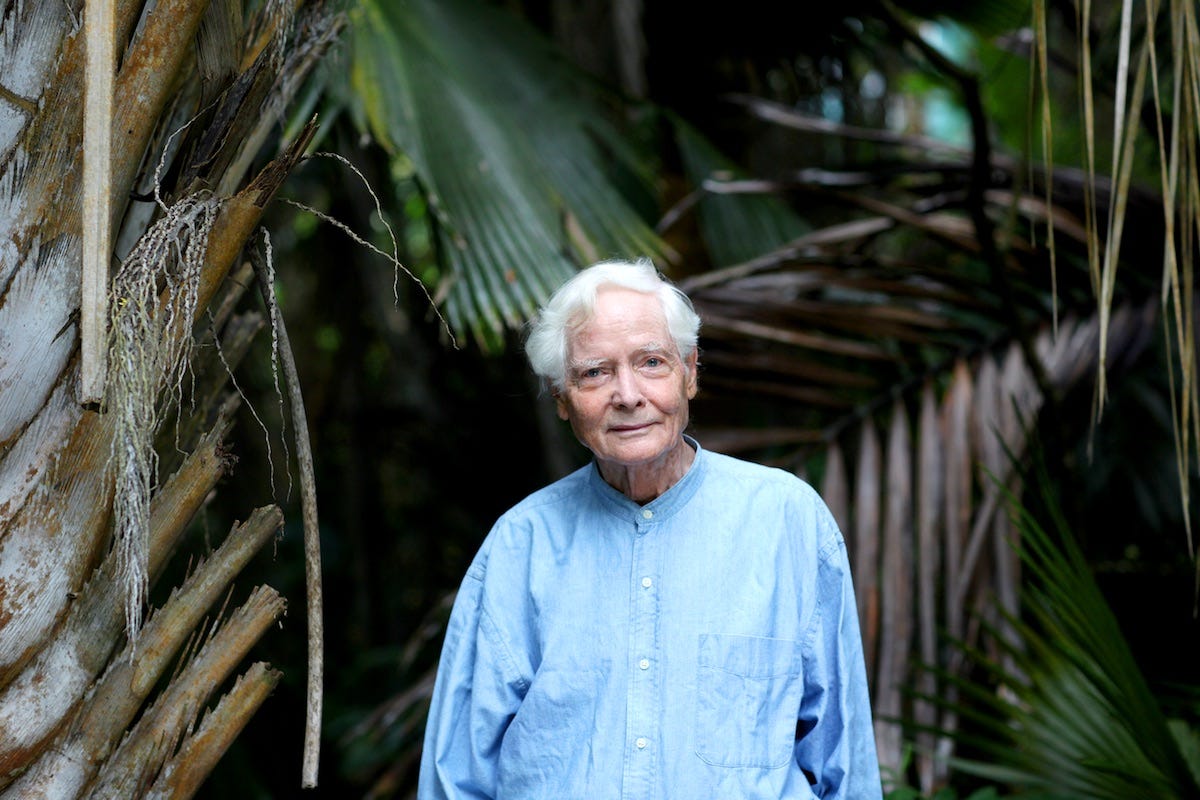You’ve read about the Maui wildfires, of course.
As with any of our increasingly frequent natural disasters, the stories of human and animal suffering are hard to take in. But we must. We can’t close our eyes—or minds or hearts—to how the Earth is speaking, ever more loudly and urgently.
It’s the Buddha’s First Noble Truth of suffering, dukkha, and we must pay attention. There is no choice anymore. This is the ancient, immutable law of cause and effect, action and consequence, calling us to awareness.
But in the midst of the sadness, I want to share with you a story of hope. It’s the tale of how one person can make a huge difference, how love and devotion can partner with the Earth in a sacrament of regeneration. And it happened right there on Maui.
W.S. Merwin was a Pulitzer Prize and National Book Award-winning American poet who lived from 1927 to 2019. He served two stints as the U.S. Poet Laureate and wrote more than 50 books of poetry, prose, and translations. In addition to his literary achievements, Merwin was a practicing Buddhist, an anti-war activist, and a seeker of life in harmony with the environment.
In the late 1970s, Merwin and his third wife, Paula, moved to the hamlet of Haiku, on the Hawai’ian island of Maui. (I know … a poet living in a place called Haiku. Isn’t it perfect?)
They bought an abandoned pineapple plantation from colonial days that was not much more than three acres of sun-baked soil exhausted from the incessant demands of agriculture. Merwin wanted to restore the land to its original ecosystem of tropical rainforest. How better to do that than plant trees?
So plant they did—one tree a day for decades. Can you imagine? What if you went out and planted a tree every day, every single day, for the next 20 or 30 years? What kind of legacy would you leave for the place where you live? What kind of cooling balm would that be for our feverish Earth?
I love this quote from W.S. Merwin about their work of restoring the land :
“In gardening, as my wife and I go about it here, what are called concerns–for ecology and the environment, for example–merge inevitably with work done every day, within sight of the house, with our own hands, and the concerns remain intimate and familiar rather than far away. They do not have to be thought about, they are at home in the mind. I have never lived anywhere that was more true.”
Nowadays the Merwins’ “paradise found” is one of the most extensive palm collections in the world. It’s 19 acres of deep green shade, a treasure trove of more than 400 different species of palms. At least 3,000 individual trees make up this botanical jewel. Merwin himself called it “a garden that aspires to be a forest.”
In 2010, several years before they died, the Merwins established a nonprofit conservancy that would oversee and preserve their land in perpetuity. This well-loved sanctuary, such a testament to land stewardship, will live on—and on.
The Merwin Conservancy has a vibrant program of artist residencies, literary gatherings (some of them online), and educational events, all of them centered in the garden. The people involved in the conservancy clearly have a love for Merwin’s work, both literary and botanical. They’re devoted to continuing his legacy in ways that honor all his interests. Check out their gorgeous website, which features breathtaking photos and videos of this tropical paradise.
I especially recommend the 21-minute video that was filmed in and around Merwin’s middle-of-the-forest meditation hut. There’s no dialogue, no music, just the immersive experience of sitting in silence amid a living, breathing green world. At the end of the 21 minutes, you’ll feel deeply refreshed in body and soul—guaranteed!
One other recommendation: A documentary of Merwin’s life and work was produced in 2014. You can view the trailer here. The title? It’s so appropriate for these times: Even Though the Whole World is Burning. If you rent or buy the film (and it’s not expensive), a portion of the proceeds go to The Merwin Conservancy.
Fortunately, Merwin’s beloved palm garden is located on the extreme northern coast of Maui, far from the wildfires that devastated other parts of the island last week. The palm trees, the wildlife, and the Merwin Conservancy human ‘ohana (family) are safe.
In an e-mail to Conservancy donors two days after the fires, executive director Sonnet Coggins wrote, “In the days ahead, may we all listen to the strong pulse beneath the charred Earth. May we always participate in the resilience and well-being of our world.”
Amen!
In closing, I hope you’ll join me in sending deep, abiding metta (lovingkindness) to all beings affected by the wildfires on Maui. If you’re interested in helping, The Merwin Conservancy suggests the Hawai’i Community Foundation’s Maui Strong Fund.
And, in the spirit of hope and regeneration, here are some inspiring words from the poet who created a palm forest. I think of these words so often.
“On the last day of the world, I would want to plant a tree.” — W.S. Merwin









This is so wonderful Jeanne, a cooling balm indeed in these anxious times. Another place on the ever-expanding bucket list to visit, what a wonderful legacy to Merwin has left the Maui and the world. So very inspiring, thank you
I definitely will watch the 21-minute video you recommend, but your words already have deeply refreshed me in body and soul. As we watch the world burn, I think a lot of us have been asking ourselves, "What can I do?" Now I know. I can plant a tree.